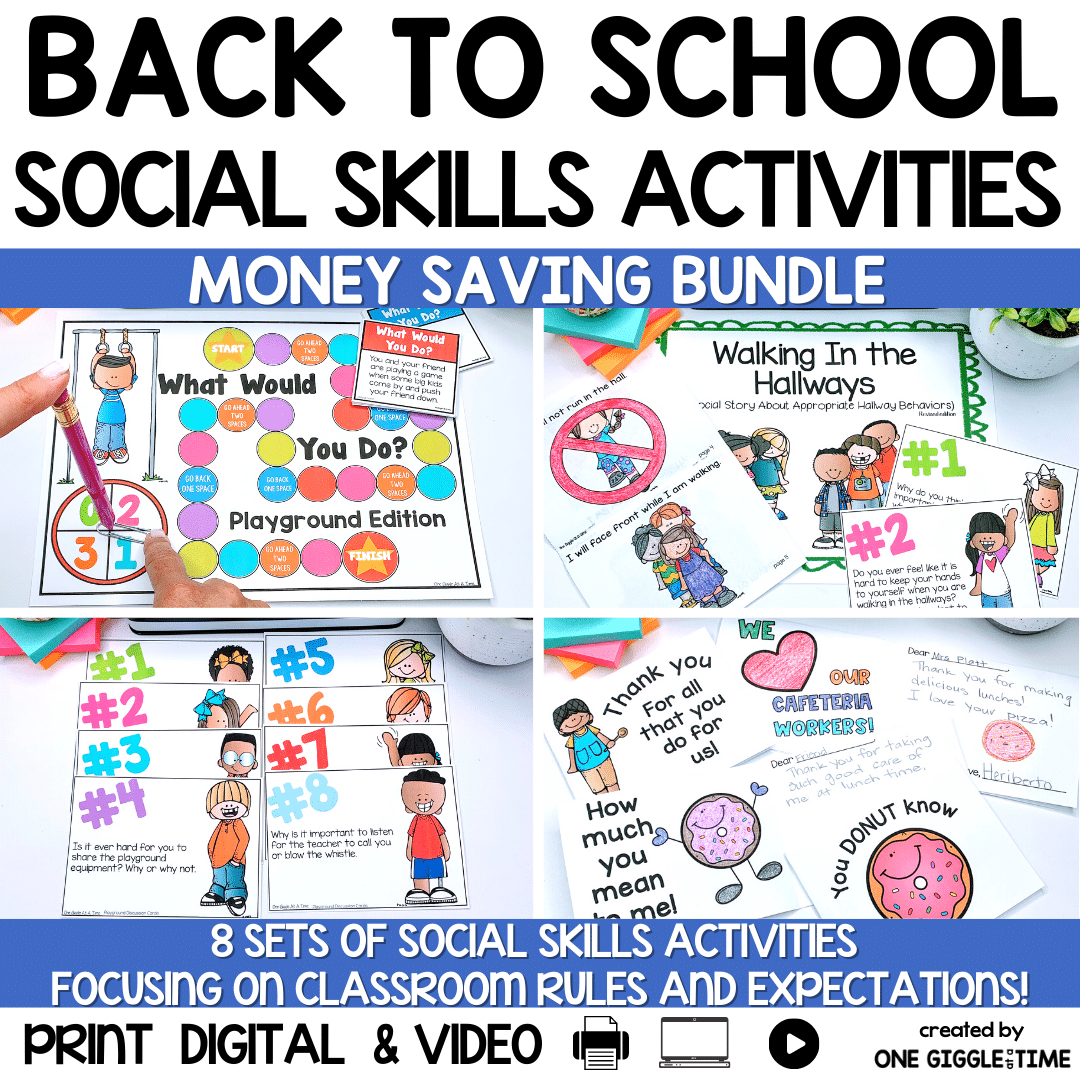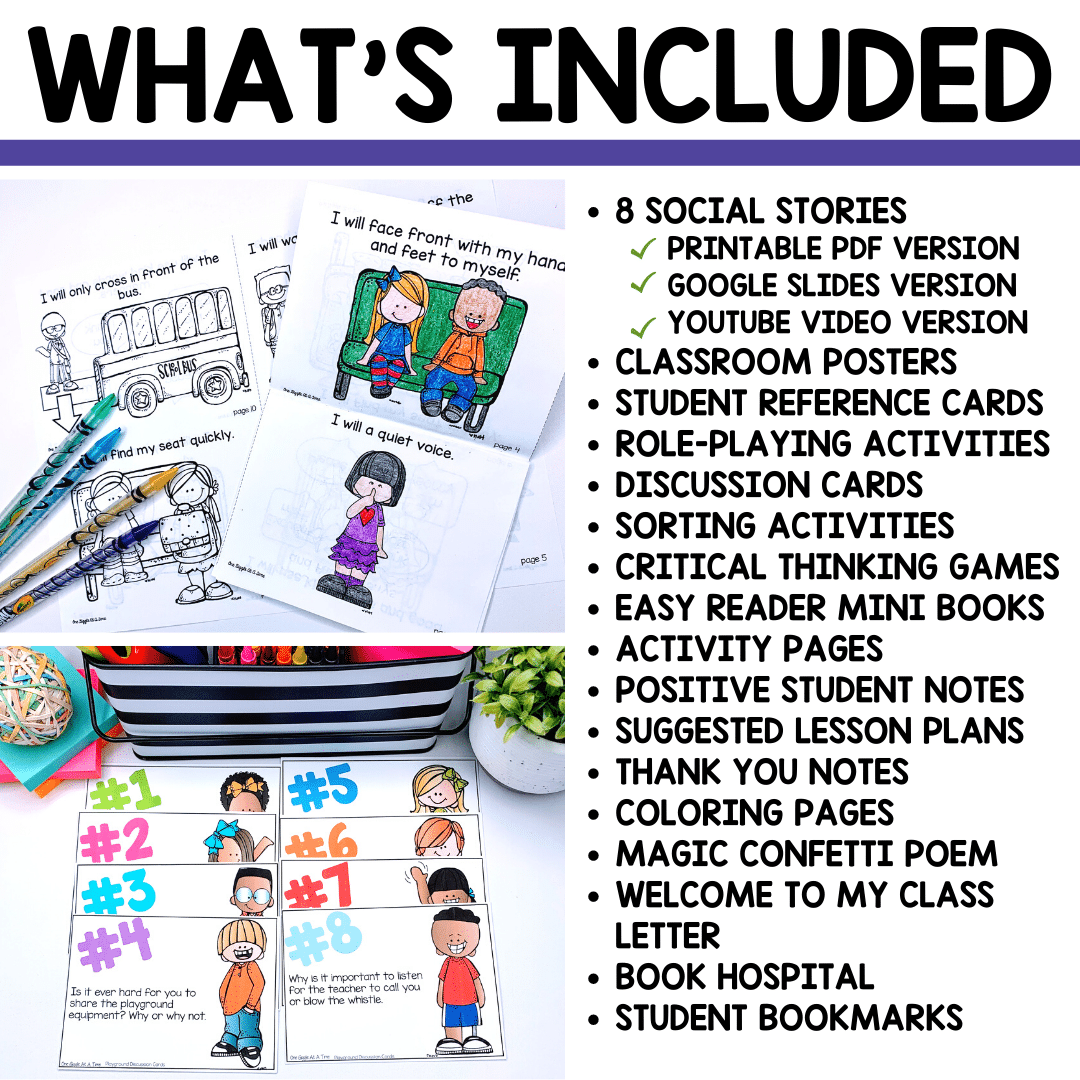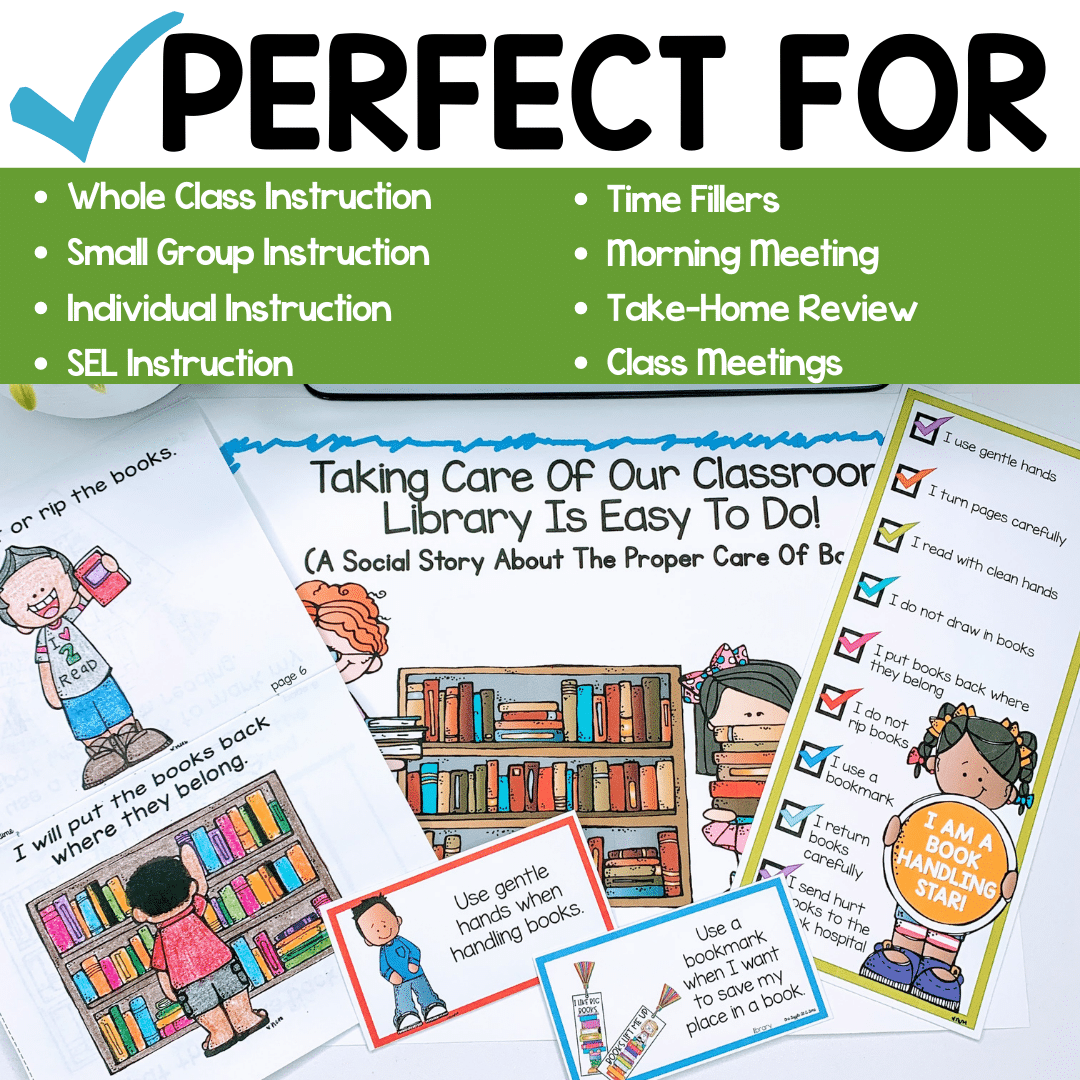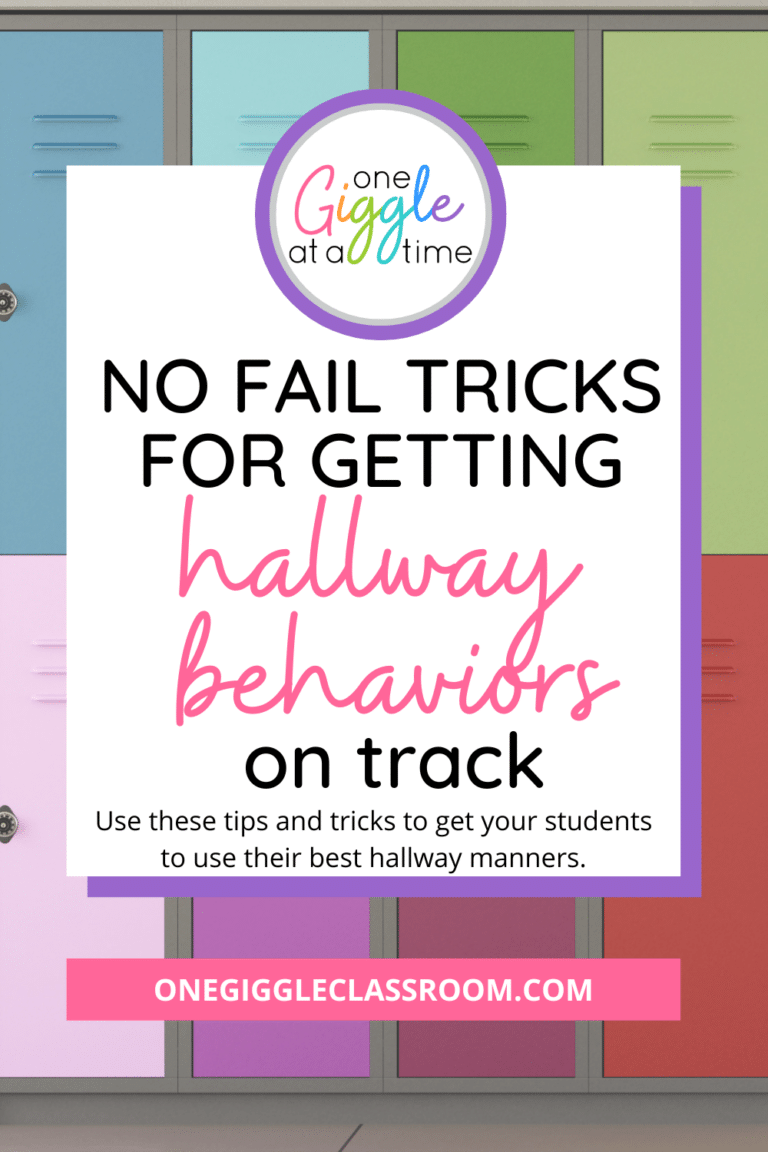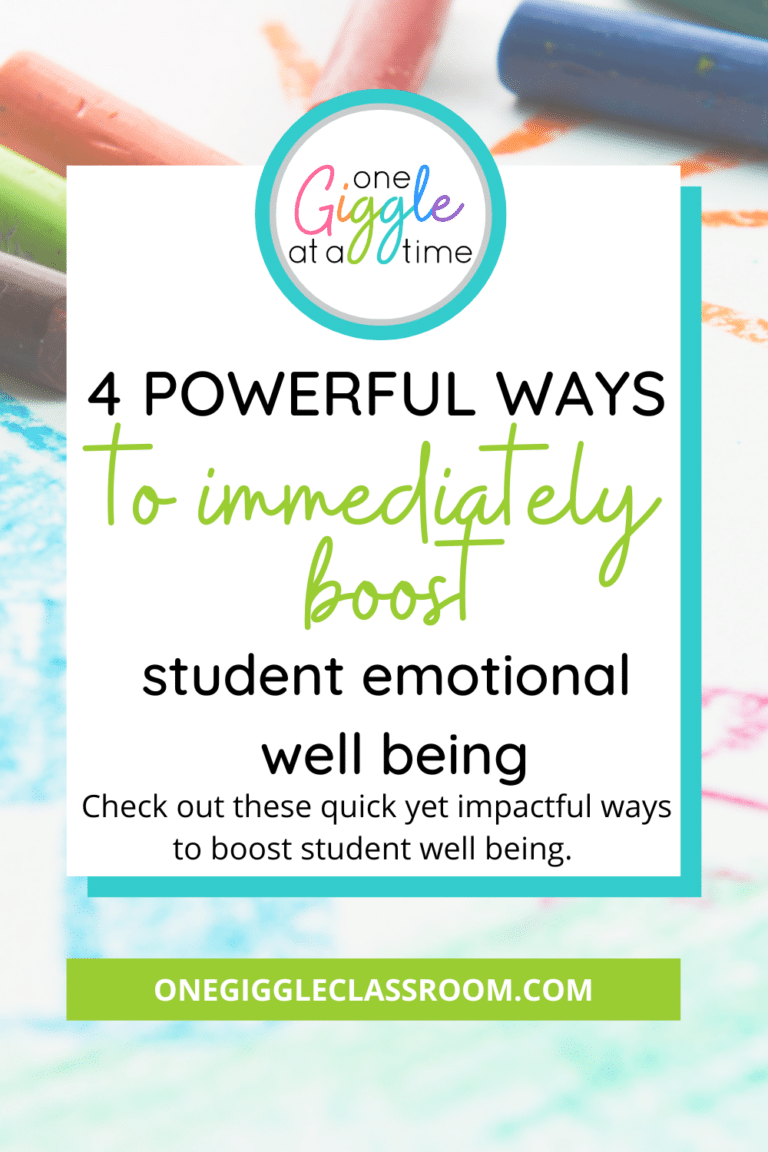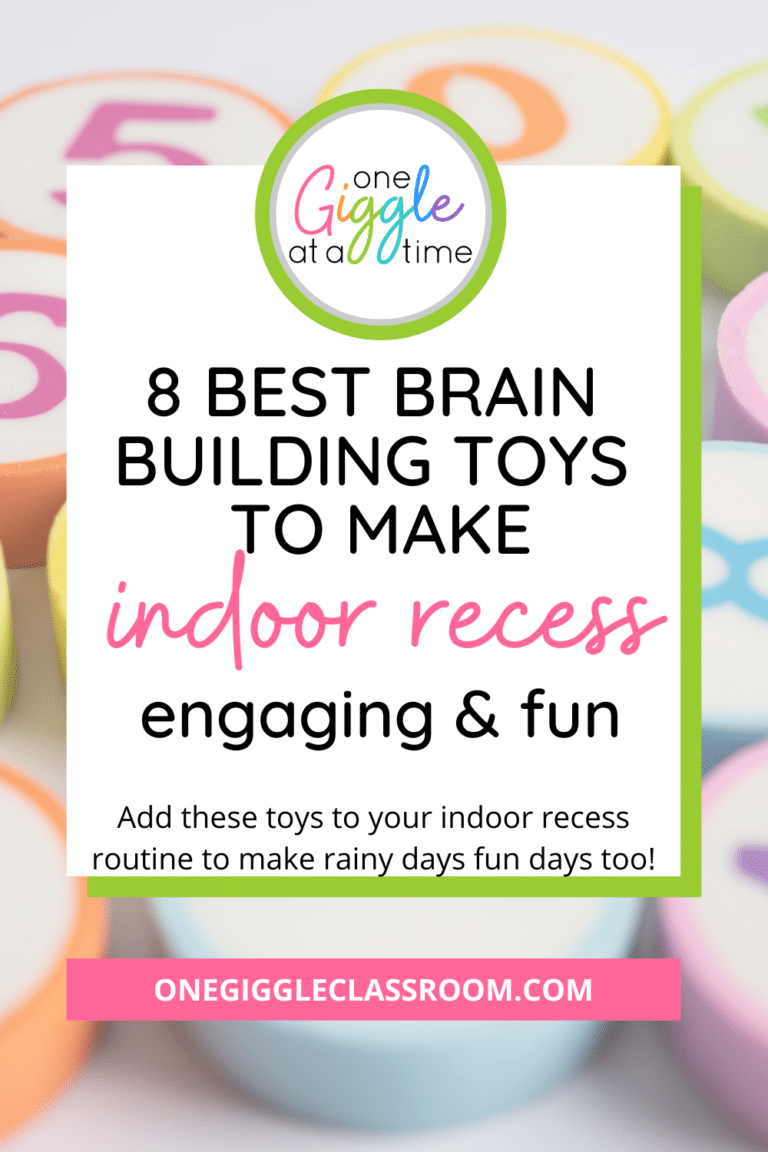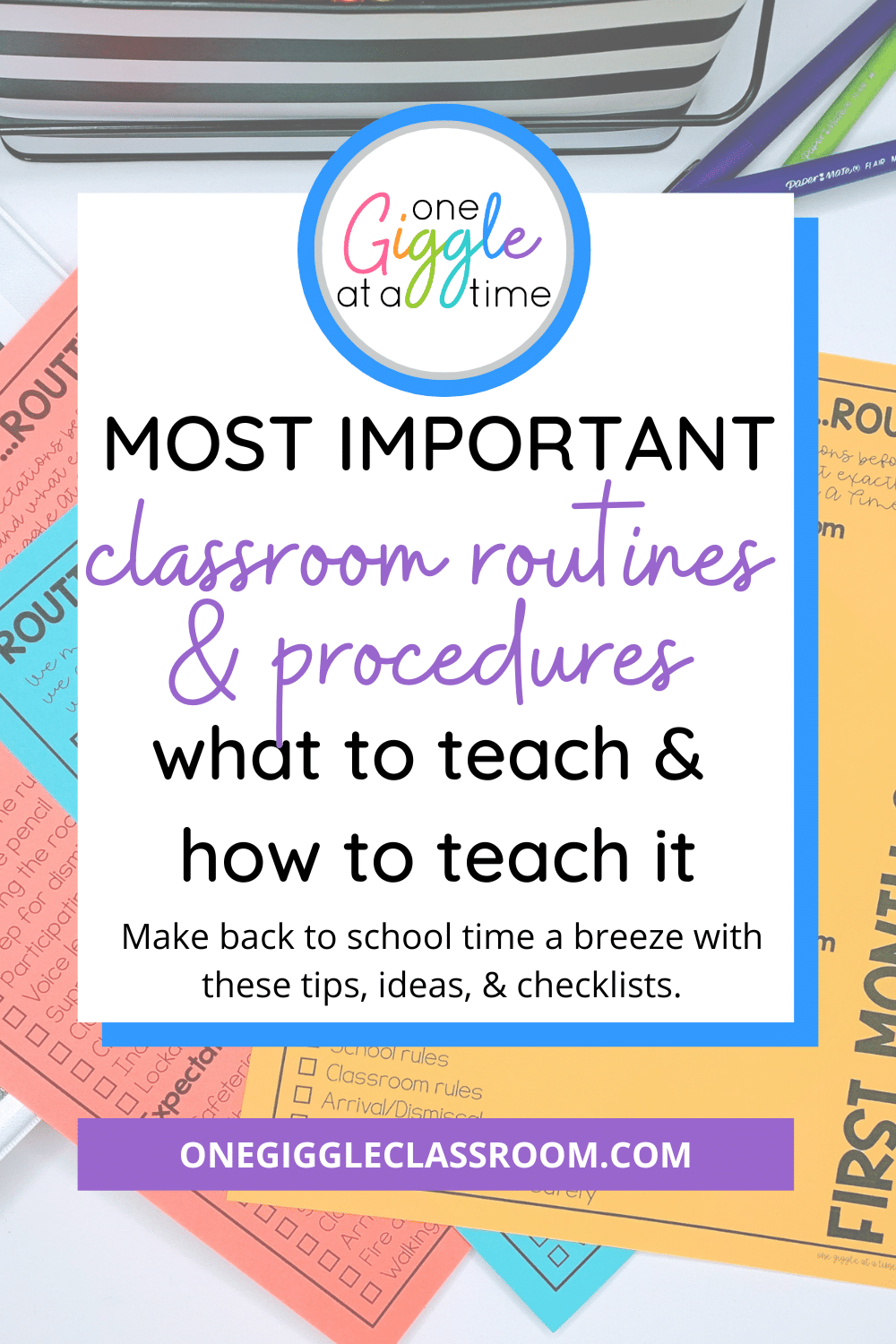
Most Important Classroom Routines and Procedures: What to Teach and How to Teach It
Share This:
Back-to-school time can feel overwhelming and easily disorganized. Students thrive when they know what to expect. Focus on teaching the most important classroom routines and procedures and your first week back to school will be a breeze!
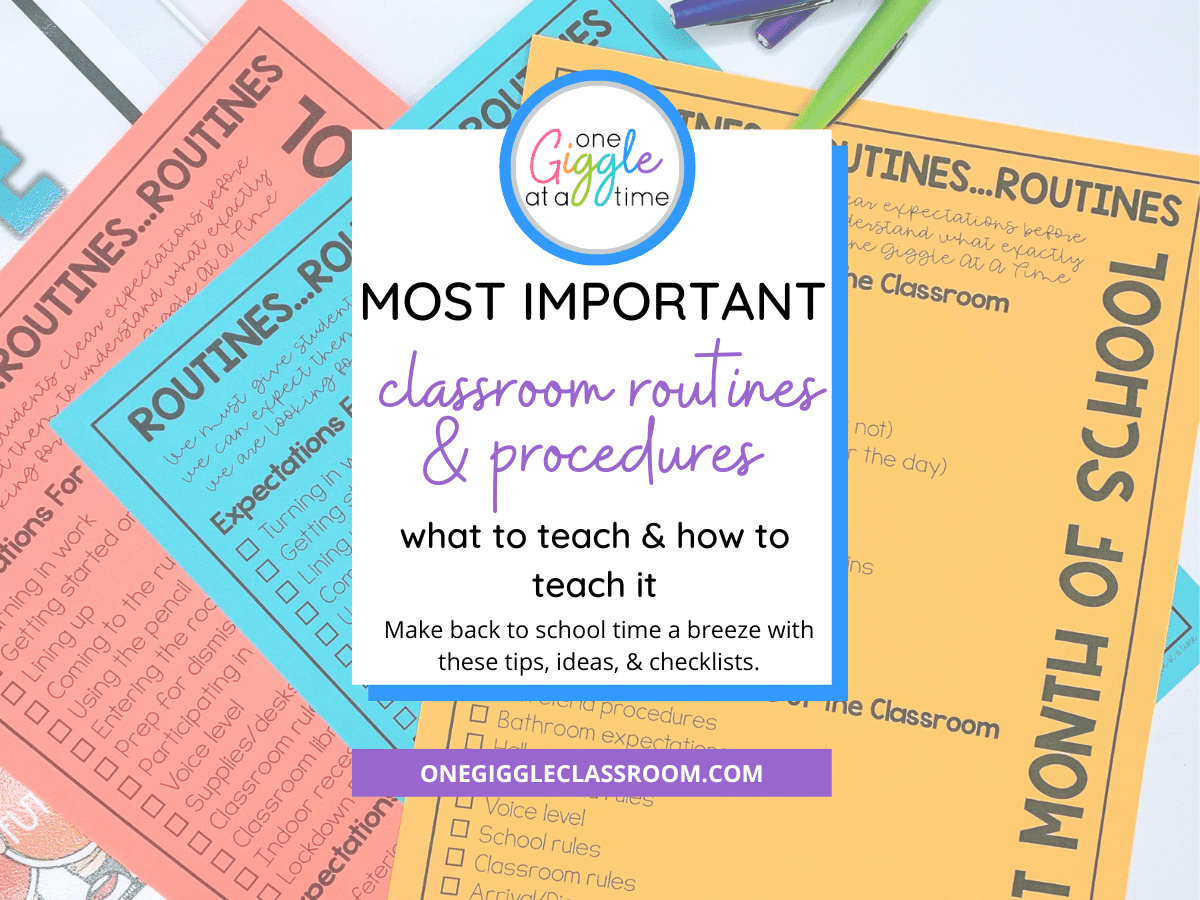
Students are exhausted as they try to transition from summer fun back into a school routine.
Prioritize establishing routines and teaching procedures at the start of the new school year, and leave all of the curricula for later on!
Getting your procedures and routines in place from the very first day of school will scaffold into strong classroom management and a positive learning environment for you and your students.
Why Teach Classroom Procedures and Routines?
The bottom line is this…
YOU MUST GIVE STUDENTS CLEAR EXPECTATIONS BEFORE YOU CAN EXPECT THEM TO UNDERSTAND WHAT EXACTLY YOU ARE LOOKING FOR.
WHERE TO BEGIN
Check out this FREE checklist for procedures and routines to teach in the first month of school!
Take it a step further and individualize things for your classroom. Begin by thinking about these three things:
1. Your classroom flow
2. Classroom behaviors that drive you BONKERS
3. Immediate new situations your students will face at school
Brainstorm a list of what’s most important to you based on these considerations. Teach those things the first week of school.
Don’t forget– you are setting your students up for success by setting clear expectations at the start of the year! The time spent on this is not in vain.
Important Considerations When Teaching Classroom Procedures and Routines
Before diving into teaching, consider different expectations for inside and outside your classroom.
EXPECTATIONS FOR INSIDE THE CLASSROOM
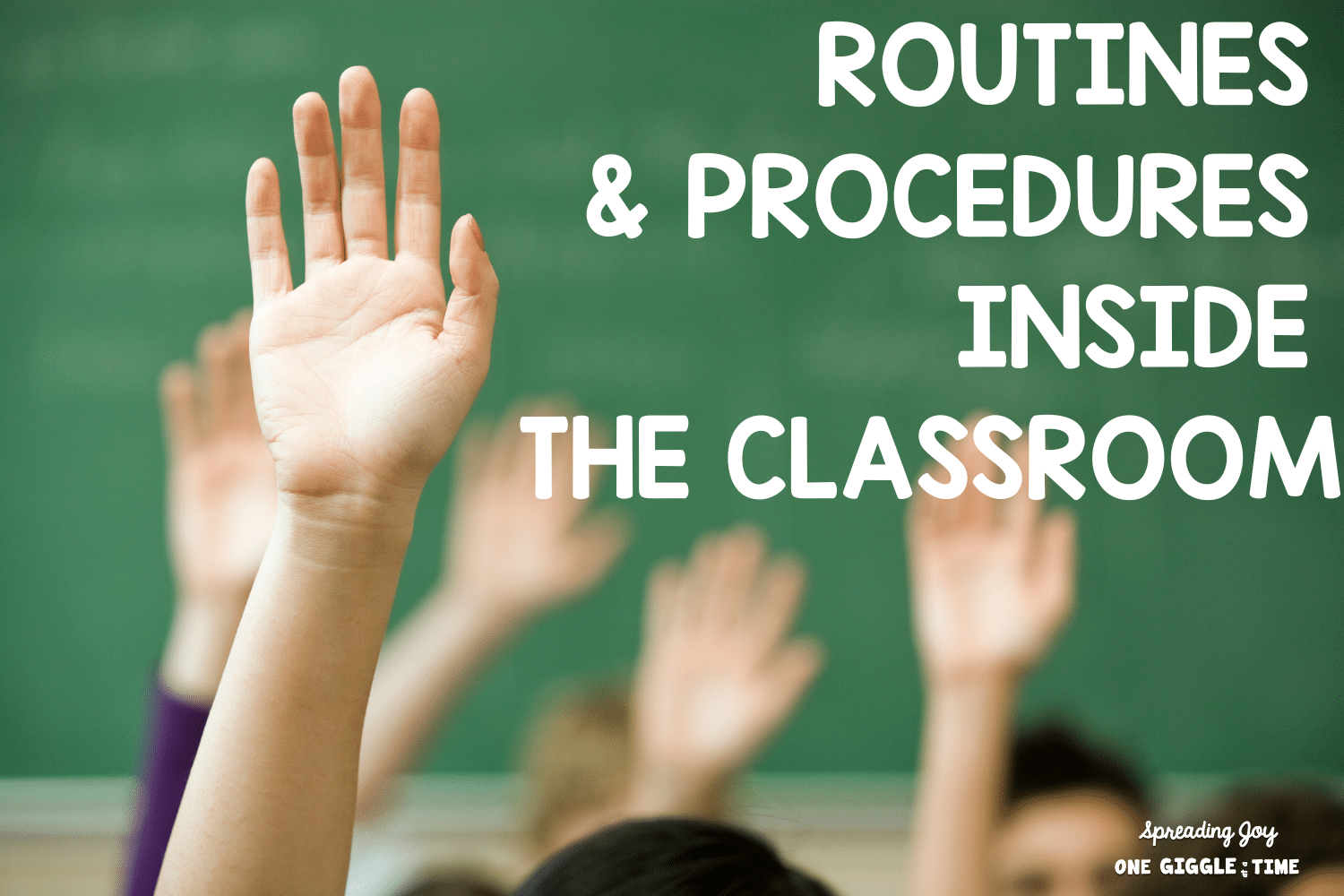
Turning in work
•Where do you want it turned in?
•How do you want it turned in?
•When do you want it turned in?
Getting started on work
•Do you want just their first name on their papers?
•Full name?
•Name and date?
•Where do you want them to write it?
Lining up
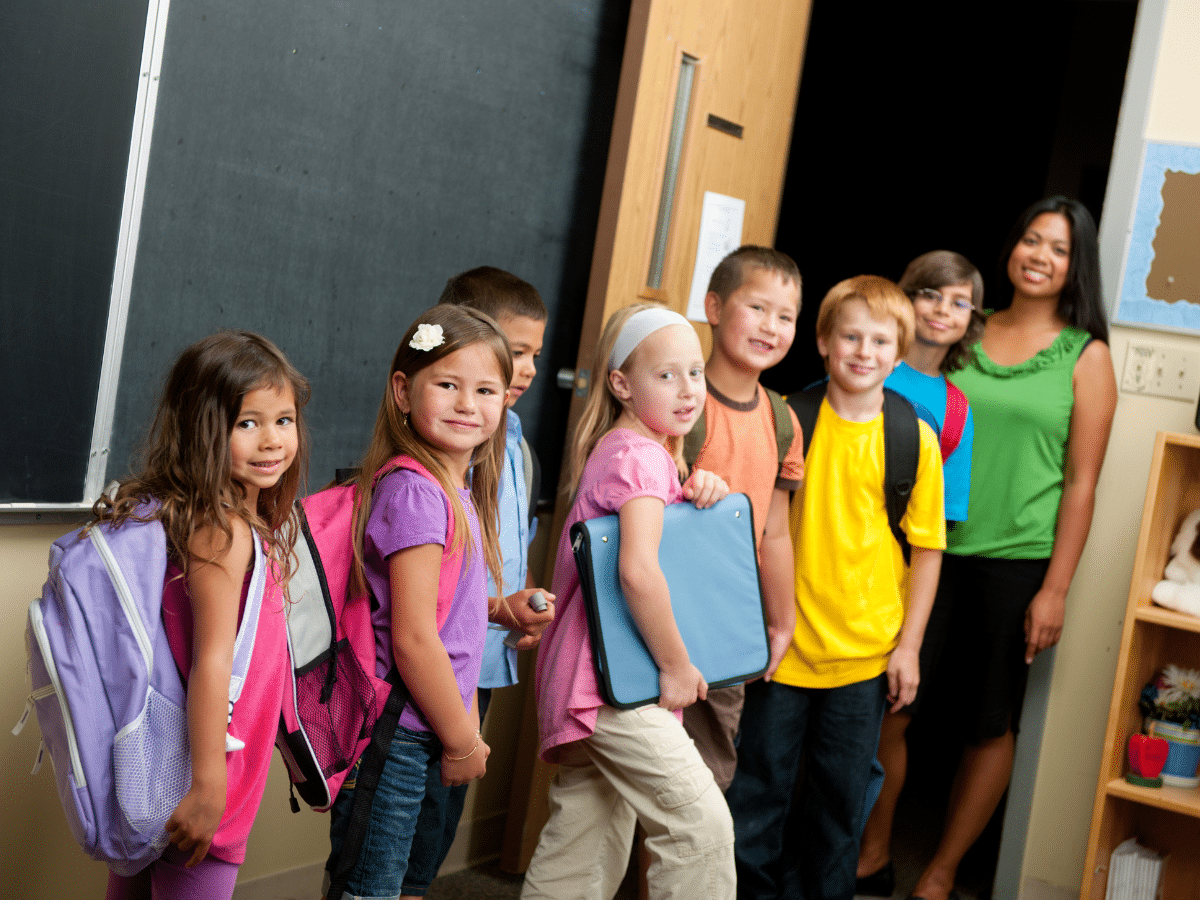
•Are you going to call by tables?
•By rows?
•Two lines? One line?
•Will there be a line leader?
•Will there be a caboose?
•Is there a certain order you want them to line up in?
Coming to the rug
•Do things need put away before they come to the rug?
•Will they have assigned spots on the rug?
•What are the expectations once they get to the rug?
Using the pencil sharpener
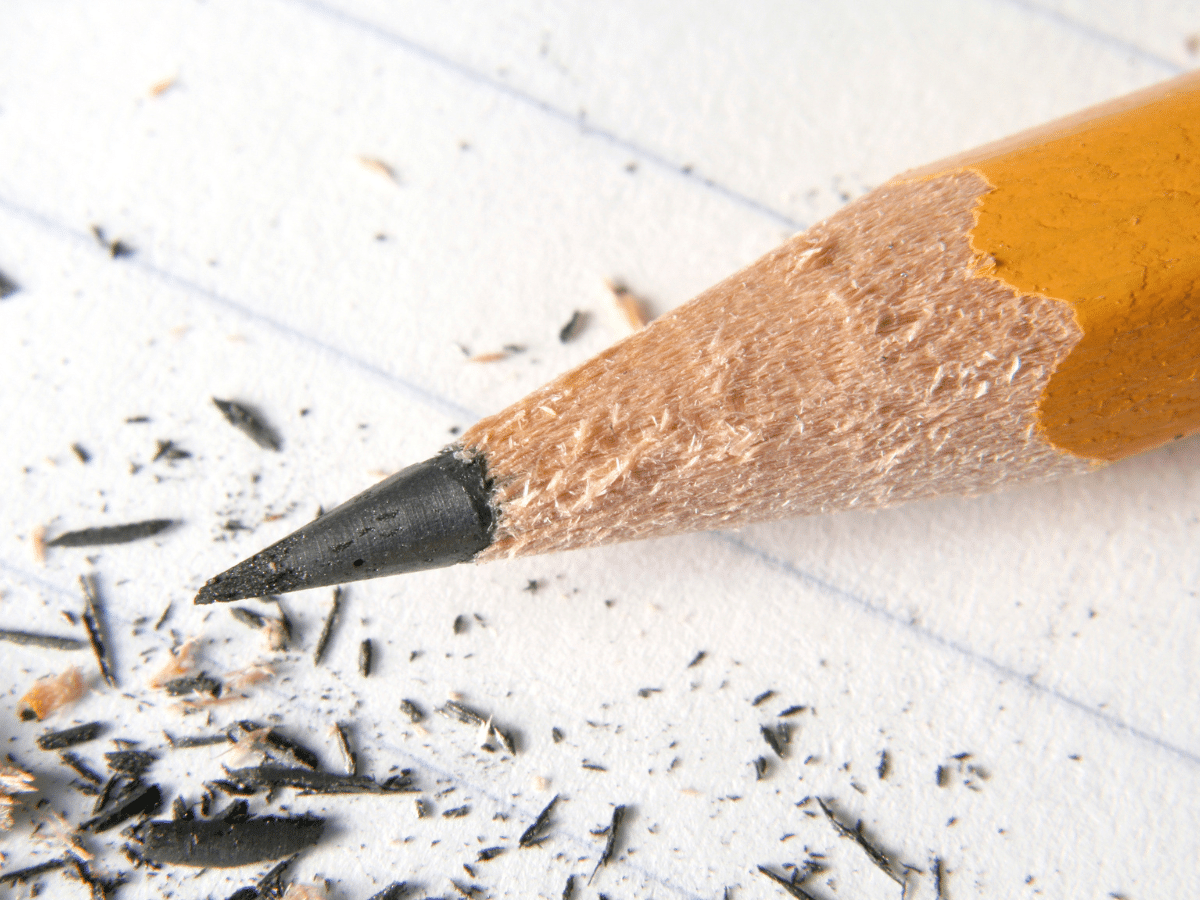
•When can they sharpen pencils?
•How many pencils should they have sharpened at one time?
•What is the procedure if they need a sharpened pencil in the middle of a lesson?
•Can more than one student be at the sharpener at one time?
Entering the room (prepped for the day)
•What should they be bringing into the classroom/to school each day?
•Do coats and backpacks need to be discarded before going to their seats?
•Where should they put any notes to the teacher?
•Where should they put any homework or returned papers?
Prep for dismissal
•What do the students need to take home with them each night?
•How should the students arrange/organize their space/area before they leave?
•What jobs need to be done to get the room ready for the next school day?
Participating in lessons
•Is calling out answers acceptable, or do hands need to be raised? Always or sometimes? How will they be made aware of when it is okay to call out and when it is not?
•What is the expectation for listening/responding to other students when they are speaking?
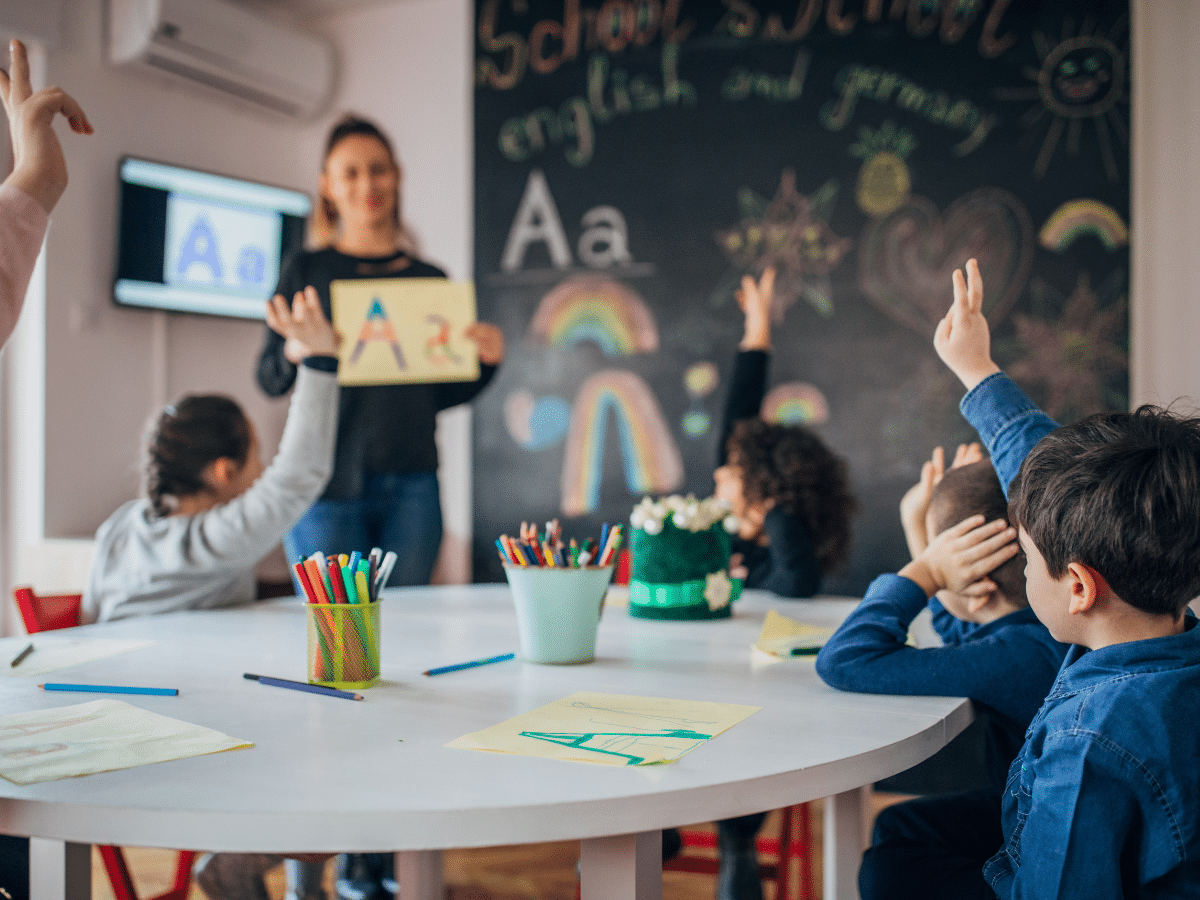
Voice level
•What voice levels are appropriate and acceptable for your classroom environment?
•When are voices not acceptable?
•When do you expect students to use a loud voice so others can hear what they are saying?
Supplies/desks/tables/lockers/bins
•What supplies do you want to be brought to school and what supplies do you want to be left at home?
•How do you want supplies organized?
•Where should supplies be kept?
•How will supplies be accessed?
•When are the appropriate times to access the supplies?
•How should bins/lockers/cubbies be organized?
•When can bins/lockers/cubbies be accessed?
Classroom Rules/School Rules
•How do you want students to treat each other?
•How do you want students to treat property (their own, yours, that belonging to the school, and to other students)?
•How do you want students to approach learning?
•What are the universal rules of the school?
Classroom library expectations
•When can they use the classroom library?
•How should books be returned to the shelves and bins?
•What is the procedure for taking care of damaged/ripped books?
•Where can they read the books from the library? At the rug? At their seats?
•Can they look at books together in groups? What are the expectations of what that would look like?
Indoor recess expectations
•What voice level is expected?
•What toys/materials can be used?
•How will students access the toys?
•How will the toys be put away at clean-up time?
•Will there be a limit to the number of children playing in each area?
•How will students be called to begin indoor recess?
•What are the expectations when it is time to clean up?
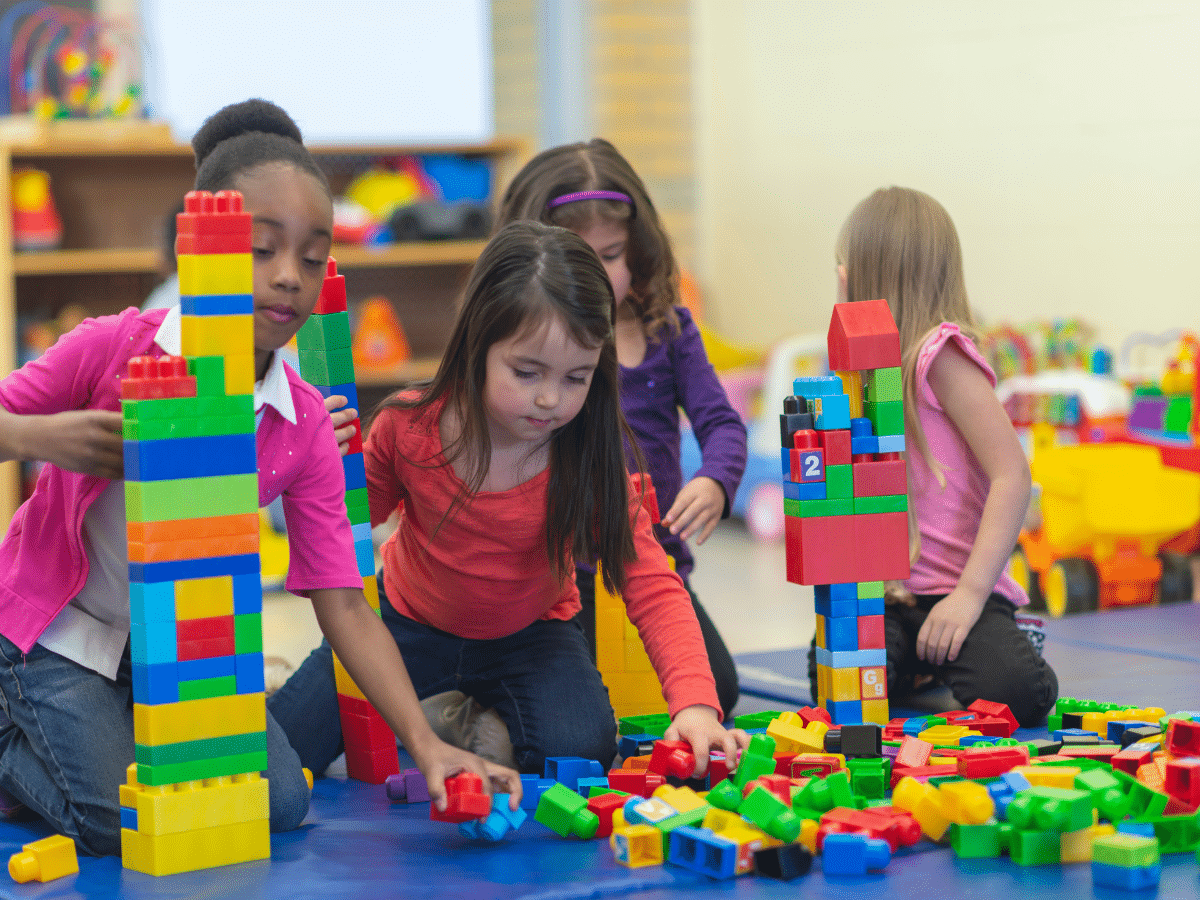
EXPECTATIONS FOR OUTSIDE OF THE CLASSROOM
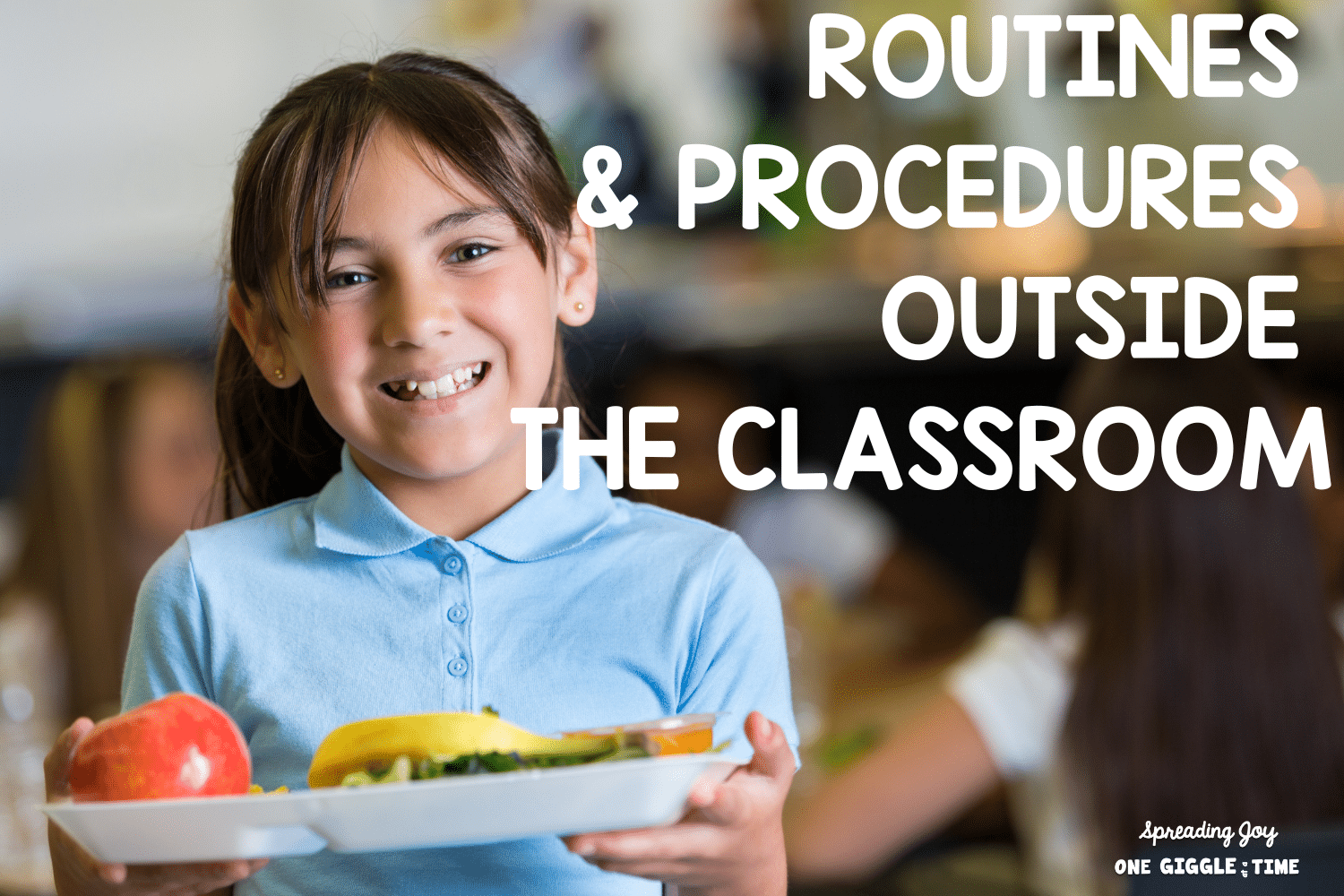
Cafeteria procedures
•What are the cafeteria rules?
•What are the procedures that need to be followed?
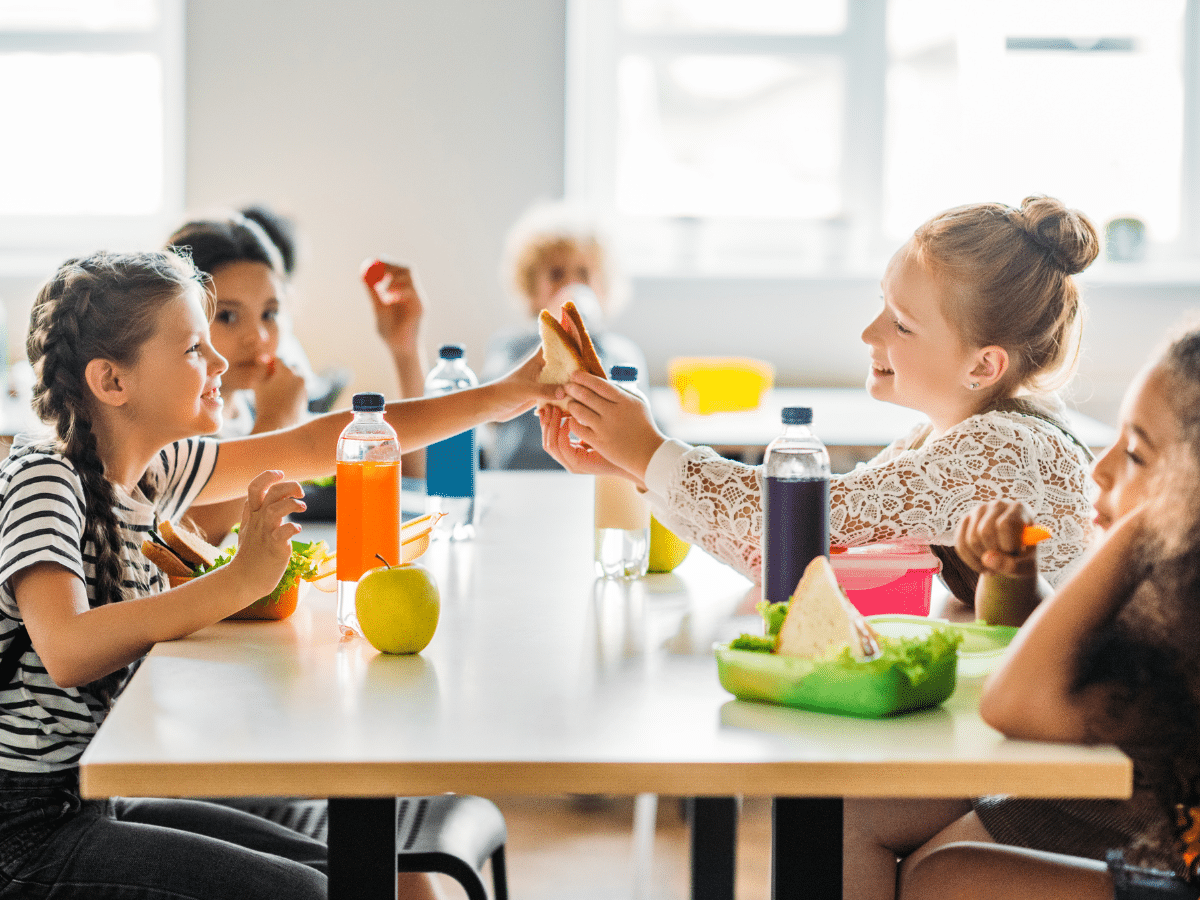
Bathroom expectations
•How often will the class take bathroom breaks?
•Will you go as a class or in groups?
•What are your expectations of students during those times?
•How and when can students request additional bathroom breaks?
•Is there going to be a rule about how many students can be gone at the same time?
Hallway expectations
•When in the hallway as a class do you expect no talking?
•How should the line or lines look?
•What about when traveling alone in the hallways? What are the expectations?
Playground rules
•What are the universal school rules for the playground?
•What are your rules and expectations for your students?
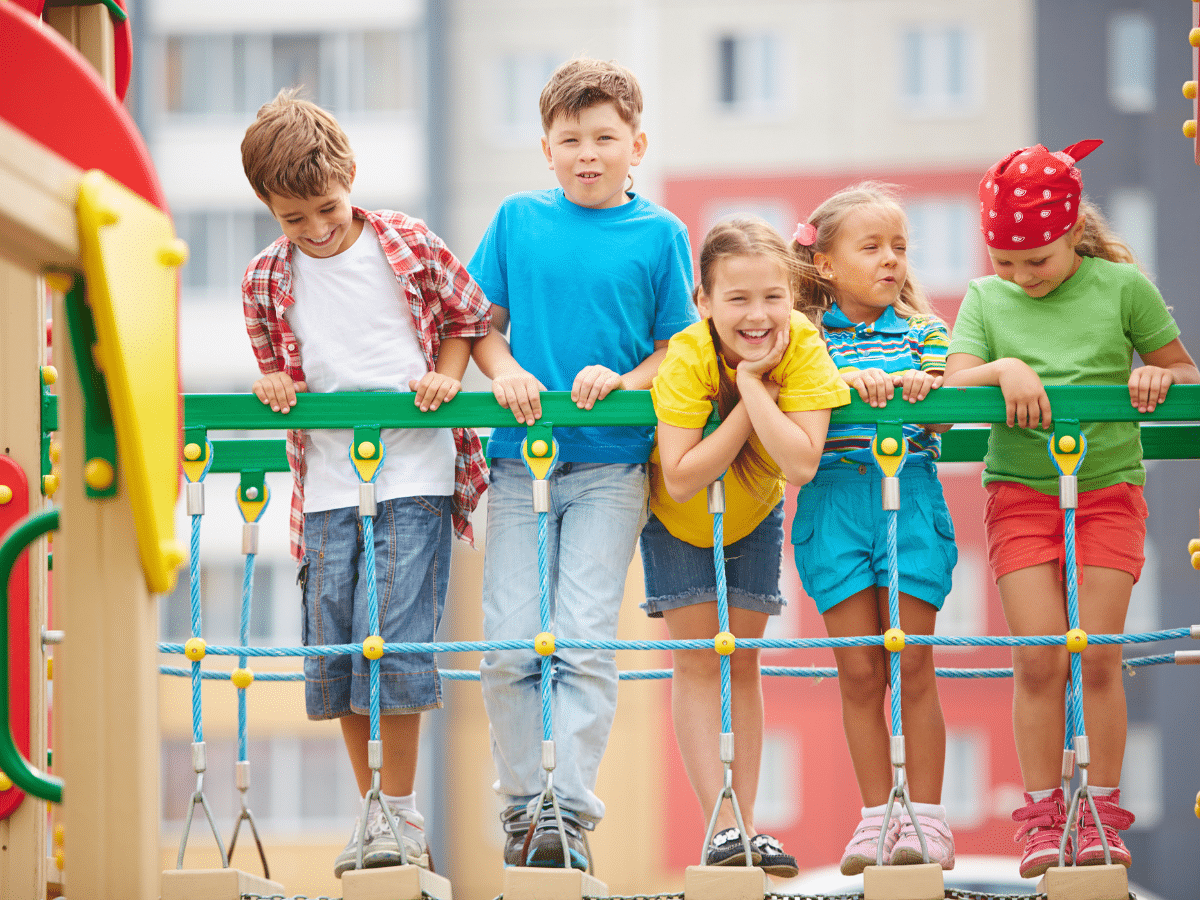
Walking to School/Bus Safety
•How will you be keeping track of walkers vs bus riders?
•What is the protocol for each?
Arrival/Dismissal
•What are the expectations upon arrival at the building?
•What are the expectations when leaving the building at the end of the day?
This BACK TO SCHOOL SOCIAL SKILLS ACTIVITY BUNDLE has everything you need to address classroom routines and procedures for inside and outside the classroom. Give yourself a break because the heavy lifting of the first week of school has already been done for you!
HOW TO BEGIN
Be strategic in how you teach all these classroom procedures and routines to students so that it’s not overwhelming and they actually REMEMBER what you taught!
1. SKIP THE LECTURING
Teach during daily routines and activities instead of lecturing students. Those kinds of lessons will quickly go “in one ear and out the other”.
Help your kids make real-time connections to your expectations!
2. SOCIAL SKILLS STORIES, SOCIAL SKILLS STORIES, SOCIAL SKILLS STORIES
Social skills stories help students know what to do in a given situation and help them gain a better understanding of how others feel and why they should respond in certain ways.
*Learn more about social skills stories here!
3. SHOW THEM HOW IT’S DONE
Model these classroom routines and procedures in action! Practice with role-playing situations. Repeat, repeat, repeat!
Children learn by doing!
Start the first week by introducing the classroom procedures and routines that naturally arise.
Don’t feel that you need to go into full-on lectures and lessons about all of them that first week.
It is ALL going to be repeated over and over and over again so many times for the next few weeks. Go back to that list you brainstormed. If it is on your list, then make those things a priority for the first week of school as full-on lessons with activities, discussions– “the works”.
If it didn’t make the list, just give them the basics this first week, but know that this is a procedure that will eventually need to be taught more in-depth in the coming weeks.
In between teaching about classroom procedures and routines, throw in a curriculum-based lesson here and there, but make it something light and fun: a math review game, a fun reading lesson, or a getting-to-know-you activity.
It All Pays Off
Focusing the first few weeks on lessons that build classroom climate and community, instead of on more academic subjects, your efforts are going to sooo pay off in the weeks to come.
In the weeks to come, when your students are now settled in and ready to get down to the business of math and reading and word study, you will be able to teach those subjects in a positive and organized environment because your classroom management will already be in place and operating like a well-oiled machine.
Don’t forget to grab the BACK TO SCHOOL SOCIAL SKILLS ACTIVITY BUNDLE for your classroom! This bundle is jam-packed with social skills stories, discussion questions, role-playing activities, games, easy-to-read mini-books, student activity pages, and MORE!
Focusing on important classroom routines and procedures the first week back to school will definitely pay off!
Pin this post for later!
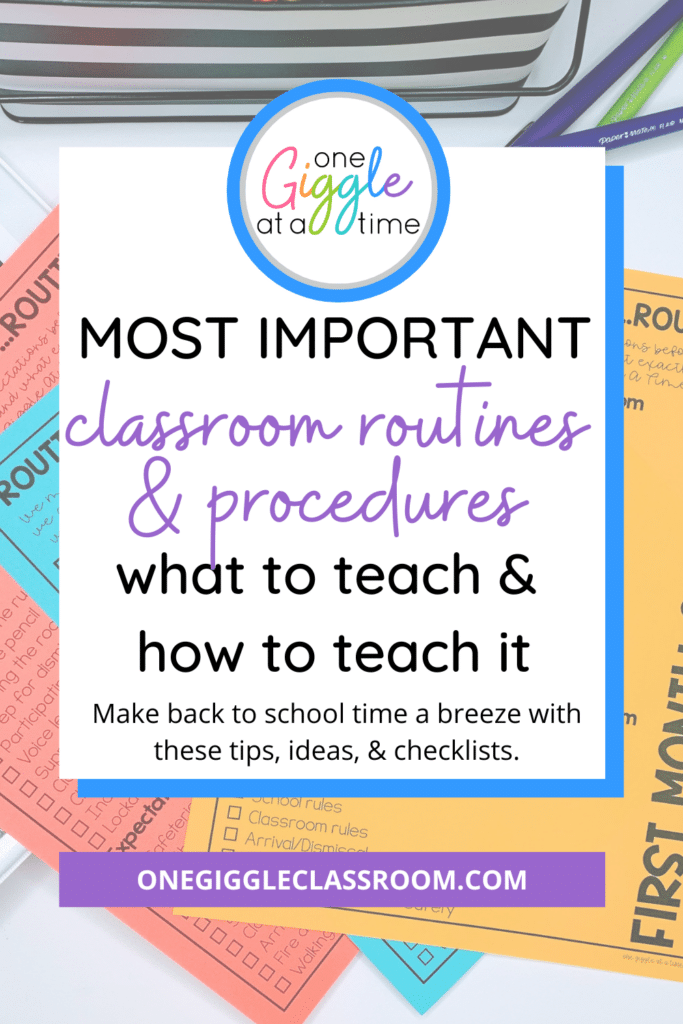
More resources for building a positive, happy, and healthy classroom environment:
Classroom Transitions Social Skills Activities
Voice Level Posters and Social Skills Activities
Personal Space Social Skills Activities
Kindness Social Skills Activities
Other posts you may enjoy:
Top 10 Activities For Teaching Feelings In The Elementary Classroom
7 Successful Strategies For Teaching Respect Of Personal Space To Kids
KEEP HALLWAY BEHAVIOR ON TRACK WITH THIS
Free Secret Walker Kit
Monitoring hallway behavior has never been so easy and so motivating!
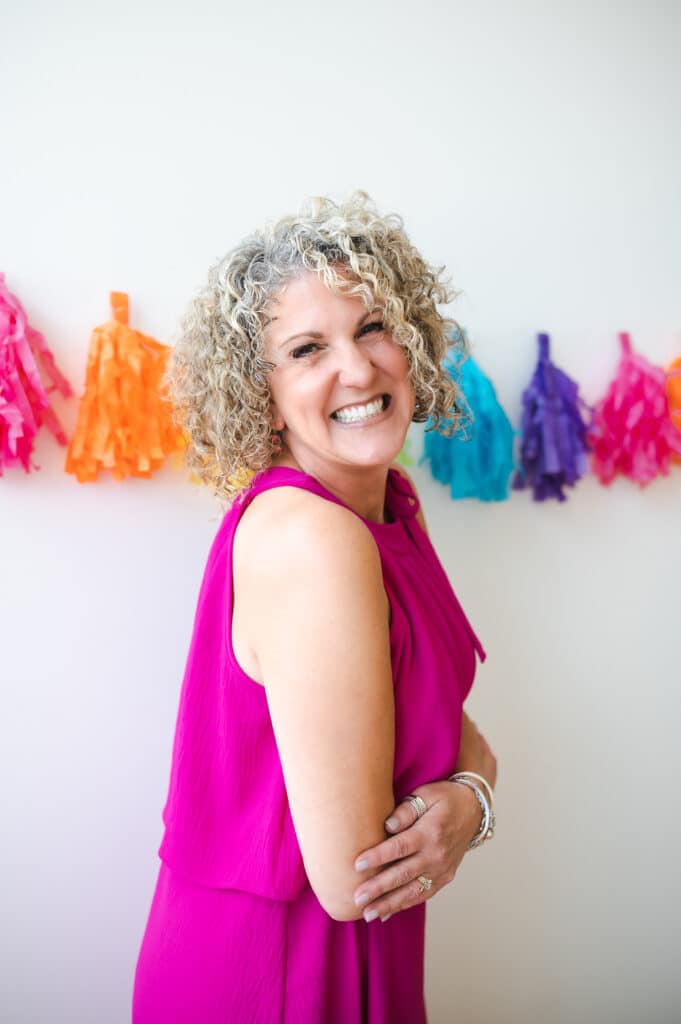

Diane Romo
Thank you for being here! I love sharing ideas with other teachers! If you are looking to enhance your teaching and build a positive classroom community, you have come to the right place!







